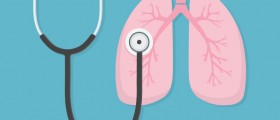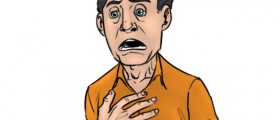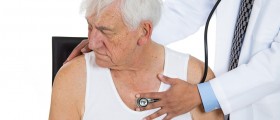
Compared to other animals, humans and mammals have a more complex respiratory system. Gas exchange is the main purpose of this anatomical system. Its main features are airways, lungs and respiratory muscles. This system exchanges by diffusion the molecules of oxygen and carbon dioxide between the environment and the blood.
Respiration can be defined as a process for obtaining and using oxygen and discarding carbon dioxide. This process is absolutely vital for the survival of all living beings.
Structure of the human respiratory system
The human respiratory system comprises of the nasal passage, pharynx, larynx, trachea, bronchi and the lungs. The nasal passage, pharynx and larynx make the upper respiratory tract, while the lower respiratory tract consists of the trachea, the bronchi and the lungs.
The nasal passages are located in the nasal cavity and they are connected to the external sources of air through nostrils. The nasal cavity conditions the air that travels towards the lungs, in a sense that it cools or warms the air and filters the unwanted particles.
Pharynx is located behind the nasal cavity and it also serves as a part of the digestive tract. Larynx is the next part of the respiratory tract. It is responsible for the production of the voice. The air that passes through it causes vocal chords to vibrate, which creates a sound. It is located in the neck and it protects the trachea.
Trachea is an airway kept open by cartilage rings. It is divided into two main bronchi, which spread and branch on the each side. Smaller branches are called tubes, and they too divide, becoming smaller, with thinner walls. This division results in the formation of bronchioles. Alveoli are the endings of each bronchiole and they are small chambers with thin walls, through which the exchange of gasses is done.
Lungs are the most important part of the respiratory tract. They are divided into two parts, one on the each side of the heart. Their function is to supply oxygen to the blood and to carry away and eliminate carbon dioxide from the blood.
Diseases of the human respiratory system
There are many different diseases and conditions that can affect the respiratory system. Some of them are common and generally manageable, and some are quite serious.
The diseases can be obstructive, like asthma, bronchitis or emphysema, or restrictive, like fibrosis, sarcoidosis, pleural effusion and pulmonary embolism.
They can also be vascular, like pulmonary edema, pulmonary embolism or pulmonary hypertension. There are also infectious, environmental and other diseases, like pneumonia, tuberculosis, asbestosis, allergies, and similar.

















Your thoughts on this
Loading...